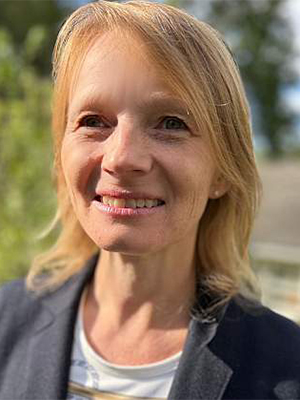Lead, Mercury, and Motherhood: Protecting Mothers and Children from Environmental Harm
By Office of the President | Mar 25, 2025
 Environmental pollution affects everyone, but women—especially during pregnancy—face
distinct risks from toxic substances like lead and mercury. Laura Geer, Ph.D., MHS, Chair of the Department of Environmental and Occupational Health Sciences, recently
joined an International Women’s Day webinar hosted by Pure Earth to explore how these toxins impact women and children—especially
in global urban, immigrant, and low-resource communities.
Environmental pollution affects everyone, but women—especially during pregnancy—face
distinct risks from toxic substances like lead and mercury. Laura Geer, Ph.D., MHS, Chair of the Department of Environmental and Occupational Health Sciences, recently
joined an International Women’s Day webinar hosted by Pure Earth to explore how these toxins impact women and children—especially
in global urban, immigrant, and low-resource communities.
One of Dr. Geer’s current projects involves a collaboration with Pure Earth to develop the Lead Exposure Reduction and Impact Calculator (LERIC). This tool estimates the long-term economic consequences of exposure to lead in childhood. By projecting potential lifetime earnings lost due to lead-related cognitive impairment, LERIC provides a data-driven approach to help policymakers prioritize cleanup efforts. The tool aligns with Pure Earth’s mission to promote sustainable, cost-effective interventions with measurable public health impacts.
LERIC allows users to input variables such as geographic location, population size, and exposure levels to model different scenarios—before and after environmental remediation, helping decision-makers understand the health and economic benefits of reducing lead contamination. Although still in development, LERIC is available to researchers and organizations interested in applying it to regional or national planning.
Dr. Geer also focuses on mercury exposure during pregnancy, which can cross the placenta, posing serious risks to fetal brain development. In a Brooklyn-based study of Caribbean immigrant women, Dr. Geer and her research team found higher mercury levels in newborns whose mothers consumed more fish during pregnancy and who were born outside the United States. While fish is a valuable source of nutrition, certain species popular in Caribbean cuisine are known to contain high levels of mercury—posing a health risk during pregnancy. These findings highlight the need for culturally informed public health education that balances respect for tradition with guidance on safer choices.
Dr. Geer’s research demonstrates how science can inform policy and protect vulnerable populations. Tools like LERIC help quantify the impact of environmental toxins and provide a roadmap for intervention. At the same time, community-based education on mercury exposure supports healthier pregnancies and outcomes for children.
Public health professionals, advocates, and policymakers all have a role in reducing environmental health risks. Translating research into accessible tools and actionable guidance can lead to healthier communities and brighter futures for the next generation.
Thank you, Dr. Geer, for your research and leadership in addressing the critical environmental health risks disproportionately affecting women and children. Your work on lead and mercury exposure—mainly through culturally informed studies and innovative tools like the LERIC model—offers clarity and actionable solutions in a field that urgently needs both.
By focusing on the real-life implications of environmental toxins and translating complex data into tools that policymakers and communities can use, you are advancing public health science and helping to protect some of our most vulnerable populations.
Tags: Events